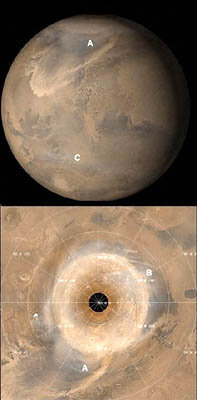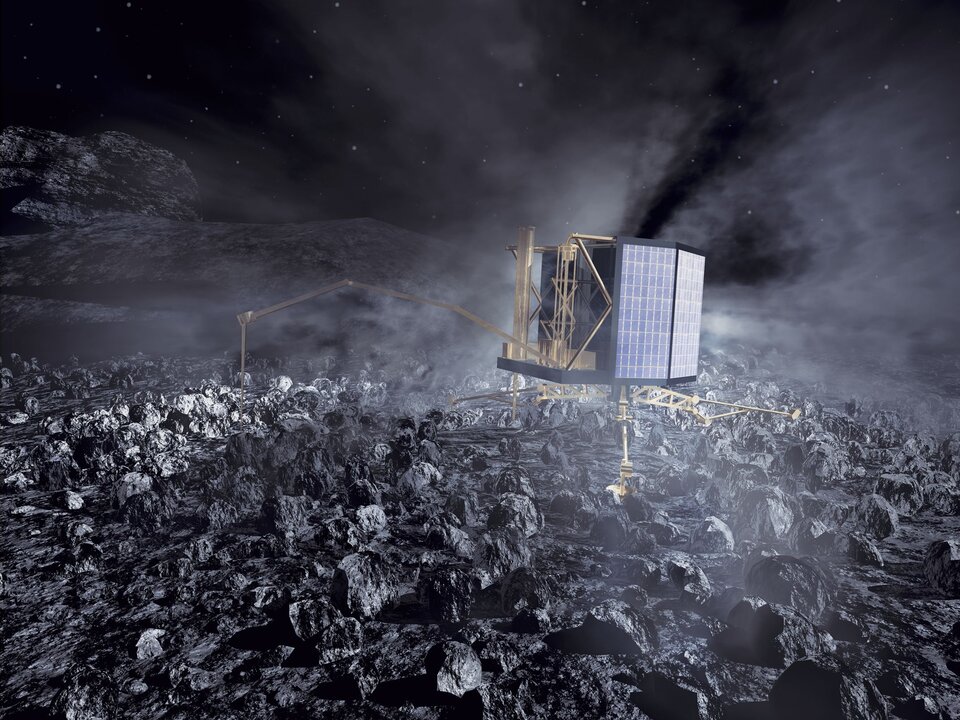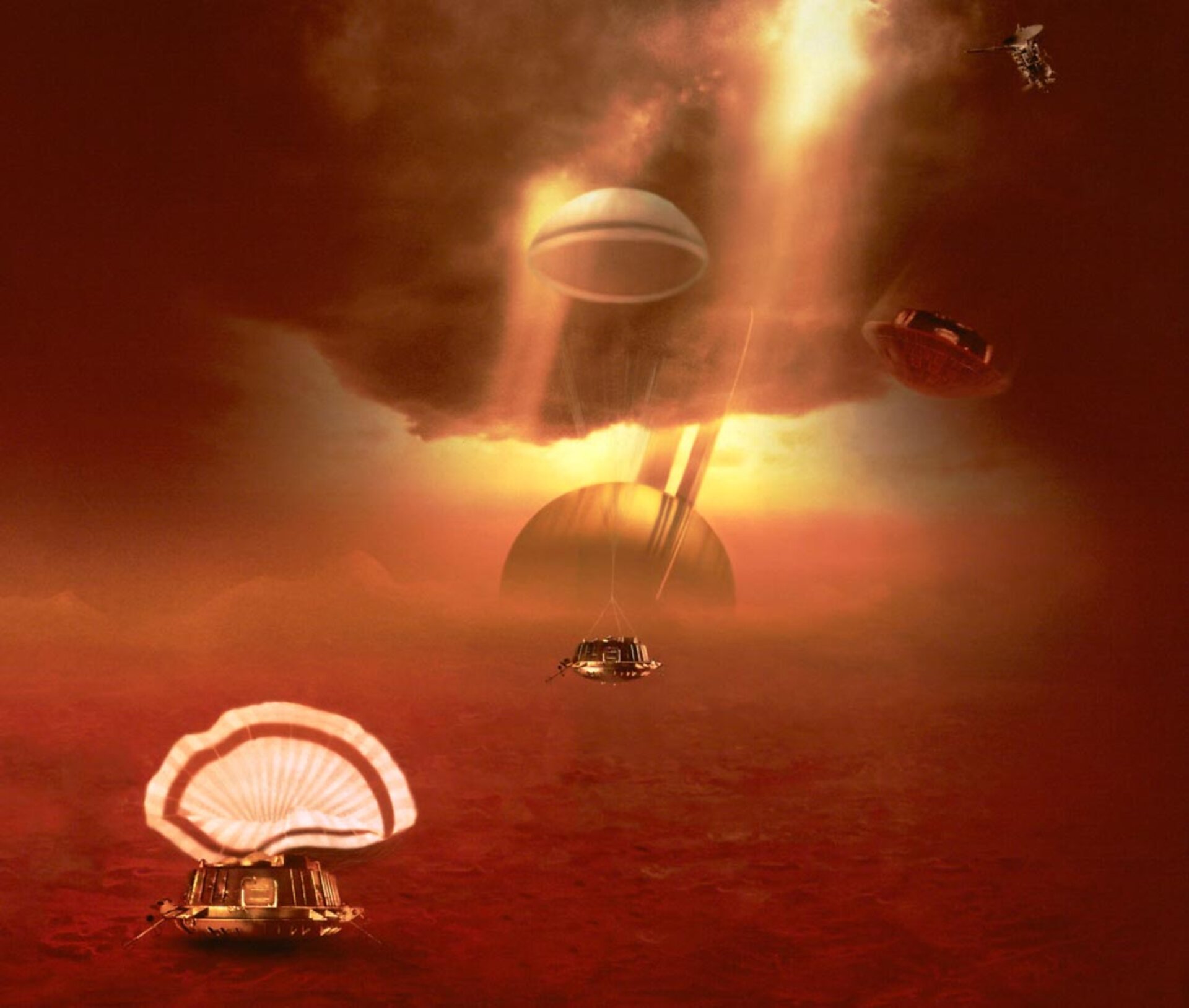Challenges of landing on alien worlds
Three ESA missions are due to send down robotic 'spaceprobes' when they arrive at their alien destinations. Since these craft will be going where no one has gone before, how can scientists be sure what it will be like down there? How do you ensure that your spaceprobe is prepared for anything?
Experts take every precaution to ensure that these probes will not burn up entering an alien atmosphere, or meet a spectacular, untimely end via a crash landing on inhospitable terrain. These probes expect the worst.
For example, the Huygens probe, which is currently on its journey to Titan, Saturn's largest moon, on-board the Cassini spacecraft, can withstand temperatures of up to 18 000°C in the shockwave in front of the heat shield. This is about three times the Sun's surface temperature. Why? The heat generated as Huygens travels through Titan's thick atmosphere will be immense.

Jean-Pierre Lebreton, Huygens Project Scientist, says "Things will get interesting once Cassini draws close to Saturn. We'll get the best views of Saturn and Titan that we ever had. We'll also observe Titan to verify that our models are correct. If we find the atmospheric density is different from what we expected, we could consider slightly changing the angle at which Huygens enters to protect it from overheating or the parachute deploying wrongly. However, late changes may bring new risks."
Scientists chose the site for the landing of the Mars Express lander, Beagle 2, very carefully. Isidis Planitia, the chosen site, is largely flat without too many rocks to jeopardise a safe landing. However, Mars's famous planetwide dust storms were taken into consideration. "Major dust storms are not expected to occur at the time and place of the landing. However, there may be strong lateral winds," says Mars Express Project Scientist Agustin Chicarro.
ESA's Rosetta lander, which will be the first man-made object to land on a comet, has another set of challenges altogether. "Firstly, we don't know anything about how rough the surface is," says Rosetta Project Scientist Gerhard Schwehm. "It could be covered with fluffy snow like the Alps or it could be hard rocks and craters. We can, however, be sure that it will not be smooth and flat resembling parking lots."

Scientists designed Rosetta's landing gear to cope with most nasty surprises as soon as it touches down on a comet in 2014. Two harpoons will anchor the probe to the surface. The self-adjusting landing gear will ensure that it stays upright, even on a slope. The lander's feet will drill into the ground. These devices will help counteract the fact that there is no gravity on a comet.
Observations of Mars, Titan and the Comet 67P/Churuymov-Gerasimneko will continue frantically while the spacecraft approach their final destination. In this way, scientists will be able to make last-minute adjustments to the timing of the landing. Information from other space missions and ground-based observations will increase scientists' understanding about the targets of the missions. In Rosetta's case, this will help to determine the comet's probable size and speed of rotation. These will help improve our 'models' for comet behaviour. However, for Rosetta, they may come too late. "We'll just have to see if the models we're using are good enough" says Schwehm.















 Germany
Germany
 Austria
Austria
 Belgium
Belgium
 Denmark
Denmark
 Spain
Spain
 Estonia
Estonia
 Finland
Finland
 France
France
 Greece
Greece
 Hungary
Hungary
 Ireland
Ireland
 Italy
Italy
 Luxembourg
Luxembourg
 Norway
Norway
 The Netherlands
The Netherlands
 Poland
Poland
 Portugal
Portugal
 Czechia
Czechia
 Romania
Romania
 United Kingdom
United Kingdom
 Sweden
Sweden
 Switzerland
Switzerland

























